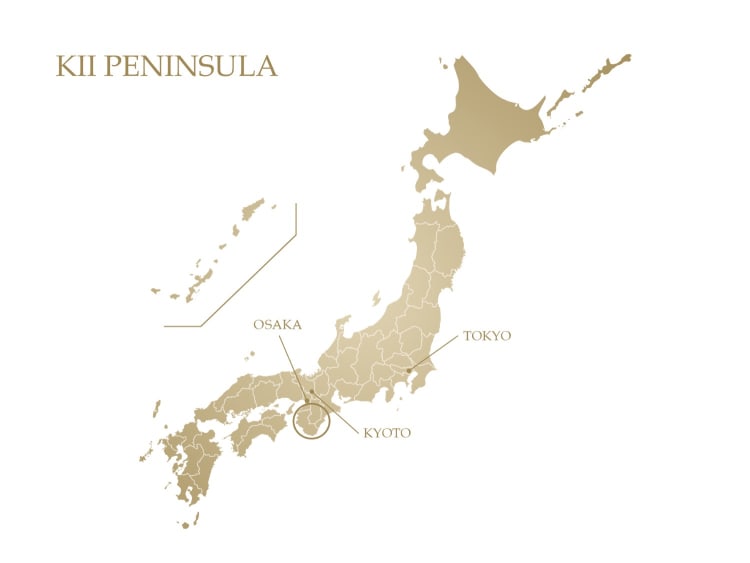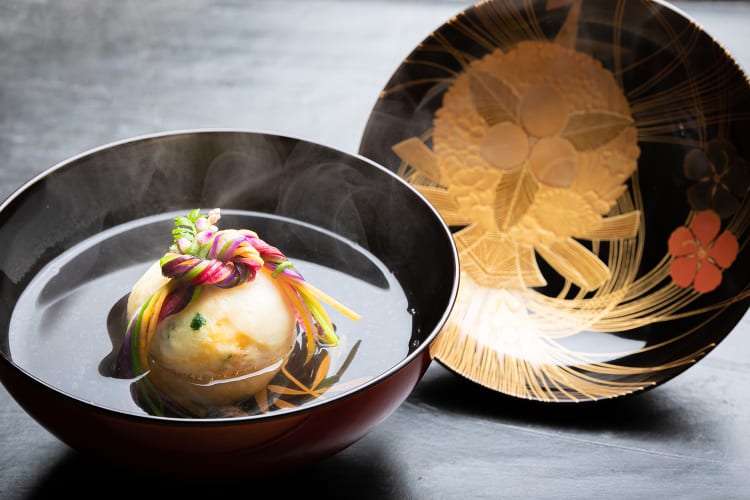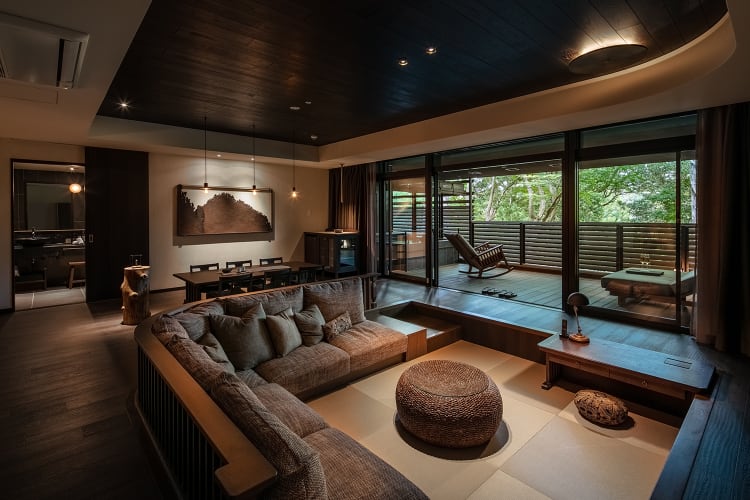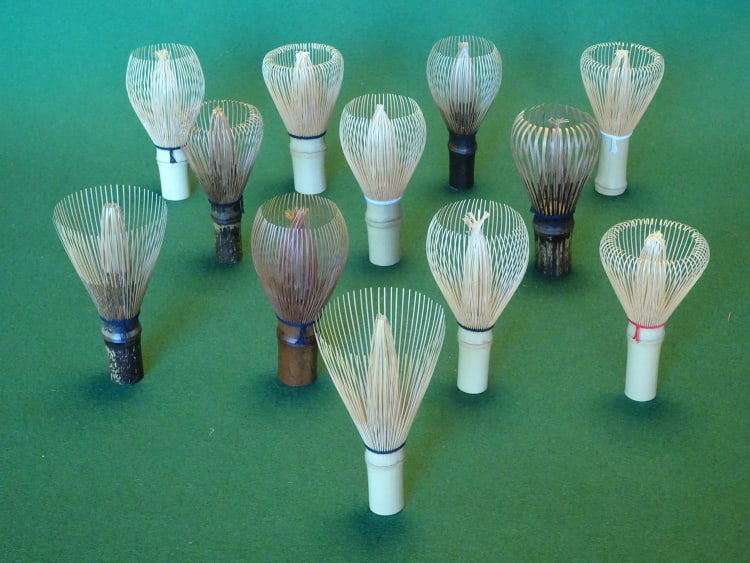Kii Peninsula: The Birthplace of Japan’s Ancient Faith
The Kii Peninsula, located in central Japan, is a land where nature and spirituality have shaped its history for thousands of years. Formed by tectonic movements 14 million years ago, its mountains have long been revered as sacred, giving rise to deep-rooted traditions of worship and pilgrimage.
Molded by powerful natural forces, the region gave rise to the belief that all things, including mountains, trees, rivers, and stones, possess a soul. This reverence for nature led to the birth of Shinto and the concept of “Yaoyorozu no Kami” (Myriad/eight million gods). Over time, these traditions blended with Shugendo, a mixed religion combining mountain asceticism, Shinto, and Buddhism, practiced by yamabushi (mountain monks) in the rugged landscapes of Yoshino and Omine. This spiritual fusion is evident in three sacred sites: Yoshino and Omine, Kumano Sanzan, and Koyasan, each integral to the region's spiritual heritage. These sites are interconnected by pilgrimage routes, including the Kumano Kodo, Omine Okugake-michi, and Koya Sankeimichi. Collectively, these sacred sites and pilgrimage routes are recognized as a UNESCO World Heritage Site.
The spiritual sites are complemented by the region’s breathtaking landscapes. Surrounded by the Pacific Ocean and the Kii Mountain Range, Kii Peninsula offers awe-inspiring scenery that changes with the seasons. Spring brings cherry blossoms to temple courtyards, while summer invites visitors to discover hidden waterfalls and lush hiking trails. Autumn transforms the mountains into a tapestry of red and gold, and winter provides a peaceful retreat into hot spring towns and historic temples.


A Journey Through Faith, Nature, and Flavor
Whether seeking tranquility in sacred temples, adventure along ancient trails, or a taste of tradition, a journey to the Kii Peninsula offers more than just sights—it invites connection through art, nature, and food.
The region is home to a vast network of sacred pilgrimage routes, collectively known as the Kumano Kodo, which have guided travelers to important religious sites for over a thousand years. These ancient trails connect the Three Grand Shrines of Kumano (Kumano Hongu Taisha, Kumano Nachi Taisha, and Kumano Hayatama Taisha) through dense forests, mountain passes, and coastal paths. The Nakahechi, historically favored by the imperial family, is the most well-traveled route, while the Kohechi provides a more rugged, mountainous connection between Koyasan (Mt. Koya) and the Kumano region. The Iseji route extends further east, linking the Kumano shrines to Ise Jingu (Ise Shrine), one of the most sacred Shinto sites in Japan.

Kumano Kodo, Ohechi (Daimonzaka)
At Koyasan, over 1,200 years of Buddhist tradition live on through shukubo (temple lodging), sutra copying, and daily rituals in its more than 100 temples. Temple craftsmen preserve its rich architectural heritage, while Okunoin Cemetery, Japan’s largest and most sacred, offers a glimpse into its spiritual legacy. A guided night tour reveals the cemetery’s moss-covered stone lanterns and towering cedars leading to the mausoleum of Kobo Daishi, founder of Shingon Buddhism.
The Kii Peninsula is more than just mountains and greenery. Along its southern coast, Shirahama offers stunning white-sand beaches, making it a rare coastal escape in a region known for its sacred trails. The Shirahama Onsen, one of Japan’s largest and oldest hot spring resorts, complements the scenic shoreline, blending relaxation with natural beauty. For a more immersive experience, the Kumano River provides a unique way to journey through the revered land. Traditional boat pilgrimages, once reserved for nobility, allow modern travelers to follow ancient water routes while surrounded by the untamed beauty of the region.
For its culinary heritage, the Kii Peninsula blends tradition with innovation. akordu, near Mt. Wakakusa, offers dishes crafted from locally sourced ingredients, earning recognition from the French restaurant guide Gault & Millau. In a restored Japanese house, Da terra presents seasonal Italian cuisine by Chef Nakai, awarded one Michelin star and a Green Star for sustainability in the Michelin Guide Nara 2024.
In Nara, the two-Michelin-starred Tsukumo offers multi-course dining inspired by the region’s seasonal flavors.

Tsukomo cuisine
Accommodations Immersed in Spirituality and Nature
The Kii Peninsula offers stays that embody its deep spiritual and cultural heritage, from historic temple lodgings to luxurious retreats surrounded by nature. Each accommodation provides a unique connection to the region’s traditions, architecture, and landscapes.
In Koyasan, Ekoin Temple, with its 1,200-year history, preserves the monastic way of life. Tatami-mat rooms with sliding paper doors reflect traditional Japanese aesthetics, while morning prayers, sutra copying, and meditation sessions offer insights into Buddhist practices. The temple’s tranquil setting and carefully maintained gardens enhance the reflective experience.
In Nara, historic elegance meets modern luxury. Shisui, a Luxury Collection Hotel, Nara, located on the western edge of Nara Park, is a renovated early twentieth-century governor’s residence surrounded by the "Historic Monuments of Ancient Nara," a UNESCO World Heritage Site. Traditional Japanese gardens, crafted interiors, and hot spring baths create a refined and immersive atmosphere. Nearby, FUFU NARA, a Kengo Kuma-designed resort, integrates handcrafted Yoshino cedar interiors, Nara clay pottery, and iron artifacts into its design. Its Tekisui restaurant serves traditional multi-course Japanese meals (kaiseki) and iron griddle cooked cuisine (teppanyaki), showcasing locally sourced ingredients.

FUFU NARA Premium Suite
For a serene countryside retreat, Sasayuri-Ann blends traditional elegance with natural beauty. Thatched-roof villas feature tatami mat interiors and panoramic mountain views, with landscaped gardens creating a tranquil setting. Nearby, Homa Temple and Fukano Village add cultural charm to the experience.
Nestled in the lush mountains of Kumano, Kumano Club offers a peaceful luxury retreat that combines modern design with traditional craftsmanship. Spacious suites with stunning nature views, private open-air baths, and refined kaiseki cuisine create an experience rooted in the region’s deep history and natural surroundings. The onsen facilities, designed for relaxation, provide a perfect way to unwind after exploring the nearby pilgrimage routes and sacred sites.

Sasayuri-Ann Exterior (Photo by Kenji Kudo)
Traditional Crafts and Specialties Keeping Heritage Alive
The Kii Peninsula is home to time-honored crafts and regional specialties, where centuries-old techniques continue to thrive through dedicated artisans. These traditions not only preserve Japan’s cultural heritage but also bring artistry into daily life.
Takayama Chasen, handcrafted in Takayama, Nara, are finely crafted bamboo tea whisks essential to the Japanese tea ceremony. Artisans carefully preserve the techniques passed down through generations, ensuring each whisk meets the standards of tea masters.
For traditional craftsmanship in everyday use, Owase Wappa showcases the meticulous art of bentwood bento boxes, made from high-quality Owase cypress. Unique for their durability and moisture-retaining properties, these handcrafted boxes are now exclusively produced by Mie-based craft maker Nushikuma, preserving a legacy of functionality and beauty.

Takayama Chasen
The region’s natural bounty also extends to its renowned beverages. Kishu Umeshu, a premium Japanese plum wine from Wakayama, is crafted from top-grade Nanko plums. Through a traditional aging process, the plum wine develops a deep, refined flavor.
The Kii Peninsula is more than a destination. It is the foundation of Japan’s spiritual and cultural identity. For centuries, its sacred mountains, pilgrimage routes, and ancient temples have shaped the country’s religious traditions. The deep connection between faith and nature is evident in every path walked, every shrine visited, and every craft passed down through generations.

